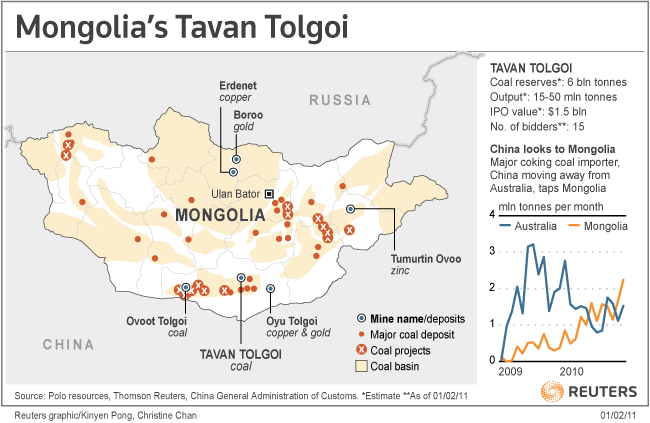Nations at risk of ‘resource curse’ pose wider dangers
 What do Bolivia, Mongolia and Burkina Faso have in common?
What do Bolivia, Mongolia and Burkina Faso have in common? The three are members of the rapidly growing category of commodities-dependent countries – nations that rely on minerals and hydrocarbons for more than 25 per cent of their exports.
The number of such countries has risen sharply over the past 15 years in tandem with the increasing prices fetched by raw materials. The trend is particularly pronounced from 2002 when miners and oil companies moved to frontier territories, putting more countries on the world’s resources map.
According to a recently published study by consultancy Oxford Policy Management, the number of commodities-dependent countries with low and middle incomes has risen more than 30 per cent between 1996 and 2010 – up from 46 to 61 countries.
The rise, which was expected due to booming commodities prices and the entry of new countries into the ranks of the world’s commodities producers, has nonetheless profound implications both for the global economy and the natural resources industry.
For the global economy, the increase means that more low- and middle-income countries have become dangerously dependent on commodities exports, leaving them highly vulnerable to a global economic downturn. Moreover, the recent and rapid rise in commodities dependence would suggest that more countries are at risk of the “resource curse” – where commodities wealth does more ill than good to poor countries.
Oxford Policy Management says that the countries more at risk of the resource curse are: Bolivia, Burkina Faso, the Democratic Republic of Congo, Ghana, Guyana and Laos.
Mali, Mauritania, Mongolia, Papua New Guinea, Tanzania and Zambia among a subset of non-fuel but mineral-dependent nations; and Algeria, Angola, Azerbaijan, Cameroon, Chad, Côte d’Ivoire, Iran, Iraq, Nigeria, Sudan, Timor-Leste (East Timor) and Yemen are among those dependent on fuel.
For the natural resources industry, the rise in the number of commodities-dependent countries also presents a challenge, usually in the form of demands for much higher revenues from the extraction of commodities including royalties, taxes, salaries and social investments.
As the consultancy highlights, the fundamental mismatch between local expectations and what companies can actually deliver in terms of benefits is a driver of much of the social tensions witnessed in relation to resource projects over the last decade. Worse, “local conflicts can easily escalate to national-level political battles”.
Overall, the number of low- and middle-income countries that depend on commodities for most of their exports is rising rapidly – a trend unlikely to change soon. Moreover, many countries remain precariously dependent on one or two commodities, rendering them more vulnerable to a drop in international commodities prices.
By Javier Blas, Commodities Editor
Comments
Post a Comment